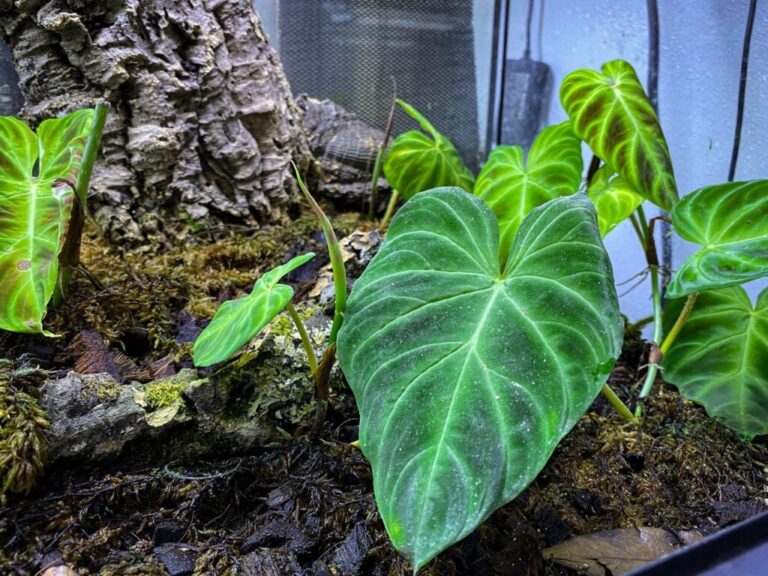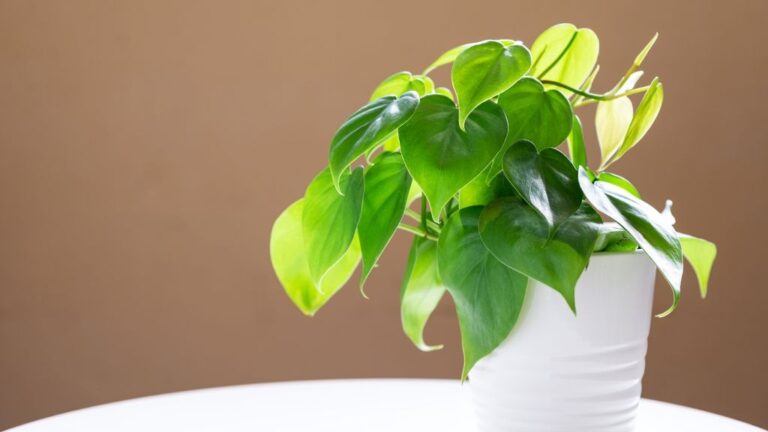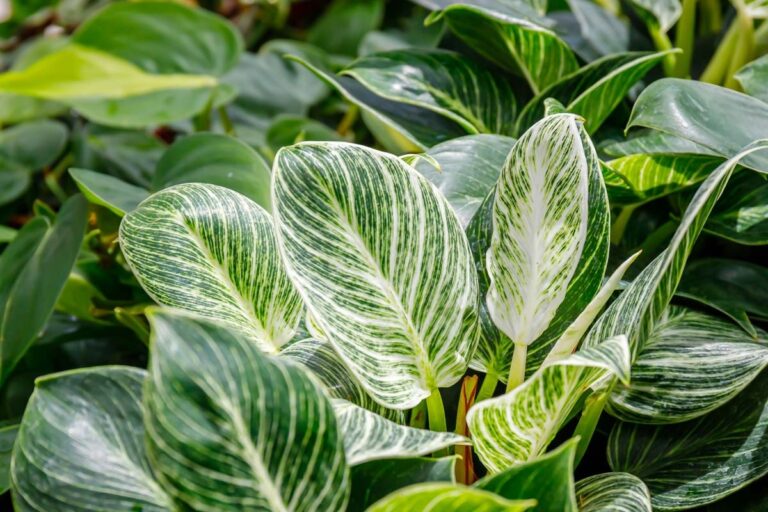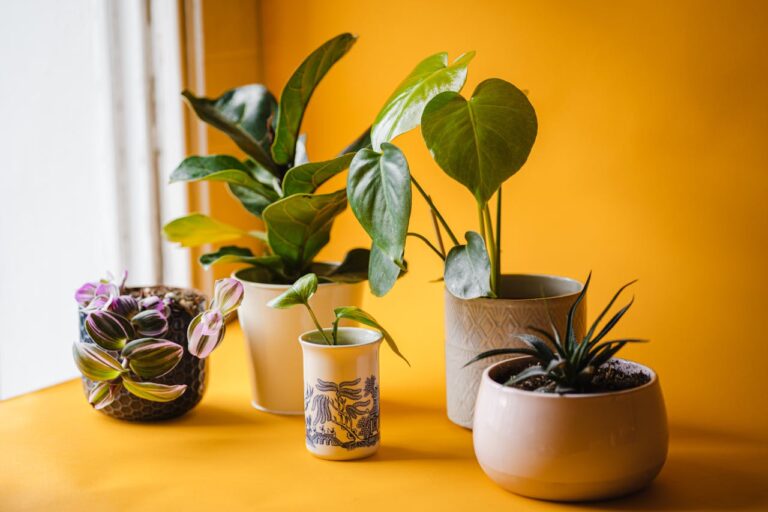Pink Princess Philodendron: Ultimate Collector’s Guide
Keeping the pink streaks in your Pink Princess Philodendron? You’re not alone. Though thousands of plant enthusiasts pour some spare cash into this Instagram-famous cultivar, less than 20% truly maintain its famous variegation after the first year. The distinction between a $20 specimen and collectors’ $200 prize is not a matter of luck, but an understanding of the unstable genetic behavior of the plant and the effective application of precise environmental controls.
Understanding the Pink Princess Philodendron Phenomenon
Pink Princess Philodendron stands among the most wonderful examples of uncertain variegation in the houseplant world. Unlike stable variegated varieties, this Philodendron erubescens cultivar has a pink tint caused by a genetic mutation causing it to stop possessing chlorophyll in affected regions. That generates a striking visual appeal, which spurs collector demand, but also presents unprecedented cultivation challenges.
The commercial production depends only on the propagation of tissue culture, for seeds yield only green Philodendron erubescens specimens. The tissue culture technique gives 25-33% plants having too little pink coloration for normal selling, limiting supply and charging a premium. However, each plant’s genetic predisposition to pink expression has been identified as a variable, and each has a distinctive capacity to exhibit variegation at high volumes.
To gain the maximum growth, the support structures are necessary due to the vining nature and aerial root development of the plant. Adult specimens are able to reach heights over six feet when given suitable climbing surfaces, though growth rates are much slower than those of non-variegated specimens due to a diminished photosynthetic capacity.
Genetic Stability and Variegation Science
Pink Princess Philodendron has pink variegation due to a chimeric mutation affecting chlorophyll production of certain layers of cells. This instability means variegation patterns can fluctuate drastically throughout the plant’s life and can be actively managed to maintain desirable colour.
As pink parts have little chlorophyll for photosynthesis, the mutation impairs the plant’s ability to produce energy. How genetics is expressed largely depends on environmental factors. Light also affects the coloration of the pink, with the optimum variation being observed under indirect light intensity similar to 1500-2500 foot-candles. Between 65-85°F shifts of temperature stimulate stress responses that can lead to increased pink expression or complete reversion to green leaf cells.
The plant develops pink variegation through the meristematic tissue, but expresses pink as a response to interaction between light wavelengths, hormone balance and cellular competition. The understanding of these mechanisms allows collectors to control the conditions for optimal pink and avoid energy starvation if leaves are too variegated.
Light Management for Optimal Pink Expression
Ideal pink variegation involves detailed light control beyond basic, indirect instructions. The best collectors use east-facing windows that let in 6-8 hours of gentle morning sunshine and also full-spectrum LED grow lights later in the winter, when sunlight is limited. Light meters are utilized to maintain 1500-2000 foot-candle intensities.
As leaf colour variation increases in the region, you also see cellular damage during direct sunlight exposure that lasts more than two hours, leading to the brownish tinges of crispy patches that color the appearance of the leaves. In contrast, not enough light beneath 800 foot-candles causes the plant to create more chlorophyll to continue more efficient photosynthesis, which leads to greener leaf color and the suppression of any pink color.
LED grow lights should emit a 6500K color temperature spectrum across the plants, the size ideally being 18-24 inches from the canopy. In active growing seasons, schedule timers keep the photoperiod at 14 hours, and in winter dormancy it will stay 12 hours. Keep an eye on leaf response to light alterations (the variegation changes can be observed within 10-14 days of treatment).
Temperature Sensitivity and Seasonal Management
Pink Princess Philodendron is obviously very sensitive to temperature, with the ideal of 72 to 78°F variation maintained during daylight hours and 65 to 70°F at night. At temperatures below 60°F stress reactions induce rapid green reversion, while prolonged exposure above 85°F drives damage at the cellular level in pink sections. Controlling the process for a transformation at the seasonal status is fundamental for retaining collector’s specimens.
Summer heat increases humidity levels from 60 to 70% to avoid leaf stress, while winter care requires protection from cold drafts and reduced watering frequency. Observe for variegation loss due to temperature loss (temperature related) that occurs over time by fading pink over 2-3 weeks after exposure to heat.
Greenhouse production promotes better environmental stability that is not only stable but has better precision temperature control of 2-3 degrees. There are heating mats for further support during winter months to keep the root zone warm and fans to prevent excess heat in summer. Install temperature monitoring systems with alerts that trigger and log alerts when the temperature varies beyond the recommended range, including any temperature monitoring and alarm if deviations of the temperature from expected ranges.
Propagation Challenges and Professional Solutions
The erratic genetics with volatile variegation of the plant which arises at the branching genetic pattern makes stem cutting propagation challenging due to the need for development of stem cutting. To propagate successfully you must choose cuttings which have at least one node with visible pink variegation in the stem tissue. Rooting success rates increase significantly in the environment of sphagnum moss propagation box containing 75-80°F and 80-90% humidity.
Air layering approaches are more favorable for prized specimens, with root growth and mother plant’s already grown variegations retained. Wrap selected nodes with damp sphagnum moss sealed in plastic wrap, observing weekly for roots. The process usually takes 6-8 weeks for sufficient root to form as well as separation.
Tissue Culture Propagation
The gold standard in genetically identical plants is professional tissue culture propagation, however, specialized laboratory equipment and sterile environment are necessary in this method. From a commercial operation perspective, certain combinations of hormones and nutrients formulated for Pink Princess micropropagation are used to yield 3-5 plantlets per explant.
To prevent seed propagation, Pink Princess seeds produce only green Philodendron erubescens seedlings that have no pink variegation. This is a common scam aimed at inexperienced collectors, with seeds being dyed artificially or green philodendron varieties mislabeled.
Prevention of Reversion: Strategic Approaches
To avoid reversion, a certain amount of watching and also intervention is needed. Watch out for the early new growth, variegation changes, first emerging leaves. The complete green reversion usually begins with small pink reduction on 2-3 consecutive new leaves and goes on until fully green foliage is produced.
Strategic pruning is the best way to maintain variegation. When plants produce three or more consecutive green leaves, immediately prune back to the last node that resulted in balanced variegation. New growth emerging from variegated stem sections carries a higher probability of pink expression, though results remain genetically unpredictable.
Don’t overfertilize, especially not with high-nitrogen-containing fertilizer, as it can lead to excessive green growth at the expense of variegation. During active growing periods, instead use balanced, diluted fertilizer at quarter-strength concentrations once monthly. Monitor the responsiveness of the leaves and modify feeding regimes based on variegation quality.
Keep the temperature constant, since stress due to temperature changes, drought, or pest infestations results in reversion responses. Spider mites and mealybugs typically prefer variegated segments and can harm variegated sections.
Current Market Value and Investment Trends
Over the past five years, the Pink Princess marketplace has seen an extraordinary trajectory of price change, with small specimens fetching $300 as well as $500 due to the extreme lack of available substitutes. For established plants, retail values currently range from $25-150; with premium specimens with remarkable variegation selling for $200-400 in specialized retailers/collector networks.
The average price has dropped 70-80% over the peak years of 2020-2021 from market saturation due to tissue culture propagation. Yet specimens exhibiting amazing variegation stability along with big mature growth still can command a premium price.
Investment-Grade Characteristics
Investment-grade plants exhibit consistent pink throughout multiple growth cycles and display healthy variegation without an abundance of all-pink leaves. For tissue culture starter plants, wholesale prices average $35-50 per specimen, with retailers charging 200-300% more for already mature plants demonstrating desirable variegation.
The rejection rate for these commercially unsuitable plants persists at 25-33%, which will perpetuate an artificial scarcity even when propagation rates are up. High-quality specimens are found most reliably from collector networks and specialty retailers. Refrain from buying plants from mass-market sellers who do not promise variegation, as the reversion rate is as high as 40-50% in improperly cultivated stock.
Keep records of provenance and growth to create value for future sales.
Advanced Cultivation Guide for Serious Collectors
With advanced cultivation, fine environmental control systems are required to ensure that conditions are uniform. Install humidity monitors; maintain 65-75% relative humidity; control temperatures; prevent temperature changes greater than 5°F; use light meters to monitor for optimal intensity. Keep detailed care logs with watering, fertilization time, and variegation changes.
Soil Composition and Nutrition
The soil composition affects the stability of variegation, so mixtures should be well-drained to prevent root stress while providing adequate nutrition. Mix quality potting soil with orchid bark, perlite, and horticultural charcoal in equal proportions, adjusting ratios based on environmental humidity. Steer clear of commercial mixes heavy in peat that compact and restrict root development.
Treat with an adequate amount of systemic insecticide that is specifically labeled for philodendron varieties and applied during periods of active growth. Routine leaf inspection allows early infestations to be spotted before variegated sections become impaired by damage. For new acquisitions, isolate for 30-45 days before introducing pests to established collections.
Protected Environment Options
Explore greenhouse or terrarium cultivation for valuable specimens, with better environmental control and protection than household temperature fluctuations. Some automated misting systems minimize leaf spot diseases associated with high humidity while maintaining consistent humidity.
Diagnosing and Fixing Common Collector Problems
Leaf yellowing indicates overwatering or root system compromise, requiring immediate intervention to prevent secondary infections. Lower watering frequency and check root systems for rot development by removing affected tissue and repotting in clean, sterile medium. Keep it slightly drier until the roots develop again.
Brown, crispy patches are caused by overexposure to light or fertilizer burn, where damage becomes permanent and needs to be treated surgically. Adjust light levels gradually and reduce fertilization, allowing new growth to replace damaged foliage. Use a monitoring system to prevent recurrence.
Growth and Variegation Issues
Leggy growth with excessive internodal spacing represents insufficient light intensity and must be adjusted with careful placement or supplemental lighting. Prune elongated stems to encourage bushier regrowth while maintaining variegated sections for propagation material.
Sudden loss of variegation is often a consequence of environmental stress, pest infestation, or nutrient imbalances. Determine causes by reviewing recent care changes, inspecting for pest activity, and adjusting cultivation practices accordingly. Document patterns to identify triggers affecting specific specimens.
Long-Term Investment Value Maximization
Capture plant growth through comprehensive photographic and measurement records to document full provenance for value estimation of potential future sales. Monitor variegation percentages, growth rates, and propagation success rates to establish quality metrics for prospective buyers.
Keep growing conditions as ideal as possible (long-term health over rapid growth); mature specimens produce more stable variegation compared to juvenile plants. Avoid propagation until specimens reach mature size with well-established variegation patterns, guaranteeing genetic expression consistency.
Networking and Community Engagement
Connect with serious collectors and specialty stores to acquire premium specimens and access market information. Visit special plant societies and collector events to establish relationships with experienced growers who share advanced techniques and verified plant sources.
For valuable collections, especially specimens with replacement value over $200, consider insurance coverage. Document plant values through professional appraisal services familiar with rare houseplant markets, maintaining updated records for claims or resale.
Key Sources:
Philodendron Pink Princess: 7 Ultimate Growing Tips & Tricks | Ohiotropics
Every Plant Collector Covets the Pink Princess Philodendron | Domino
How to Get More Pink Variegation From Your Pink Princess | Pinder’s Nursery
The Real Story of the Pink Princess Philodendron in 2025 | Soltech
Philodendron Pink Princess – Price, Rarity and Trends | PlantSlip
In Vitro Propagation of Philodendron erubescens ‘Pink Princess’ | MDPI Horticulturae
How to Care for a Pink Princess Philodendron: A Complete Guide | Soltech
The Philodendron Pink Princess Sells for Up to $1,999.95 on Etsy | Yahoo Lifestyle
Philodendron Pink Princess Propagation: 3 Easy Methods! | Ohiotropics







